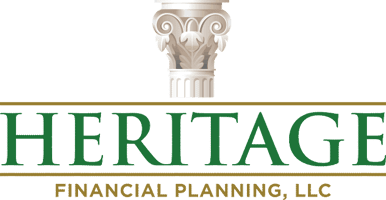Did you know that April is National Financial Literacy Month?
What started out as a financial-literacy awareness day more than a decade ago is now a month-long campaign that has been recognized by Congress every year since 2004. The program is designed to highlight the importance of financial literacy and teach people of all ages how to manage their money wisely. And, according to recent surveys, Americans have a lot of room to improve in their financial knowledge.
A July 2016 study by the Financial Industry Regulatory Authority (FINRA) shows that 63% of Americans are unable to correctly answer more than three of five questions about basic economics and finance. FINRA’s study included more than 25,000 American adults, who represented national population in terms of age, gender, ethnicity and education.
About 40% of those surveyed spend less than they earn. The other 60% are either breaking even or spending more than they earn, which means they are unable to save money steadily.
It’s no surprise then that the study also shows that 50% of Americans don’t have a “rainy day” fund to cover expenses for three months — in case of emergencies such as sickness, job loss or economic downturn. Those without an emergency savings face unexpected financial blows that not only compromise their personal financial stability, but decrease overall economic stability as well.
Let’s look at three tips that could enhance your financial literacy, or that of one of your friends or family members.
Set and Follow a Budget that Works for You
There are norms in budgeting, but those are variable and defined by influences out of your control, including your zip code and tax bracket. Ask yourself what your normal is. An estimation tool you might use is the 50/30/20 rule. That ratio breaks down like this:
- 50% of net income: Spend about 50% of your take-home pay on “fixed costs” — bills that are about the same amount each month. This might include things such as rent/mortgage, car payments, utilities, cell phone service, and memberships or subscriptions (Netflix, gym, Spotify).
- 30% of net income: In the 50/30/20 plan, about 30% of your net pay would go toward flexible spending — also commonly called disposable income or lifestyle expenses. These might include costs for hobbies, shopping, and entertainment. We will include gas and groceries in this category because even though they are needs, how you spend your money on these things might vary. One month, you might travel, which means you might spend more that month on gas and food/groceries.
- 20% of net income: Reserve about 20% of your net income for your financial goals. Three important goals to think about are paying down credit-card debt, saving for retirement, and building that emergency fund.
Manage your habits; change them if needed so they work for you. And remember that financial stability doesn’t necessarily mean mortgages and car payments. Determine your normal.
Start Saving Now
Saving money is easy to put off doing, since the consequences of not steadily saving may not be noticed or felt until later in life when you try to buy a house, send your kids to a top college or retire at a certain age.
So, start now — one of the easiest ways to make regular savings deposits is to pay yourself first from each paycheck. That way, it’s gone before you even notice it’s missing. Though saving for retirement usually is priority, you might also want to make sure you have financial reserves for emergencies.
Set Specific Financial Goals
It’s never too soon, or too late, to set financial goals. According to an ongoing survey conducted by the National Financial Educators Council on its website, participants between the ages of 18 and 24 made barely passing scores of between 68% and 73% on the 30-question test, designed to measure a person’s ability to earn, save and grow their money. The results were only marginally better — at 73% — for those in the 25- to 50-year-old age group.
The first steps to setting financials goals include:
- securing a steady source of income;
- making sure you have financial reserves;
- protecting yourself and your family from financial upheavals or disaster by buying the right insurance for life, health, disability income, and possessions.
Getting further ahead each year takes patience and planning. If your reserves stay flat, inflation will diminish its value. Stay alert and ready to go after opportunities to grow your money.
Think about what your personal financial goals are — sorting them by wants or needs might help. Decide which ones are long-term or short-term goals and prioritize them. Choose goals you’re enthusiastic about to help you reach them.
With your 50/30/20 budget, you should be able to distribute your limited resources in ways that make it possible to reach your goals.
Be sure to check out our next monthly letter when we touch on a couple more financial literacy topics, including spending on experiences, not things, and learning to savor those experiences. If you have questions or would like to learn more about certain financial topics, we are happy to talk.










